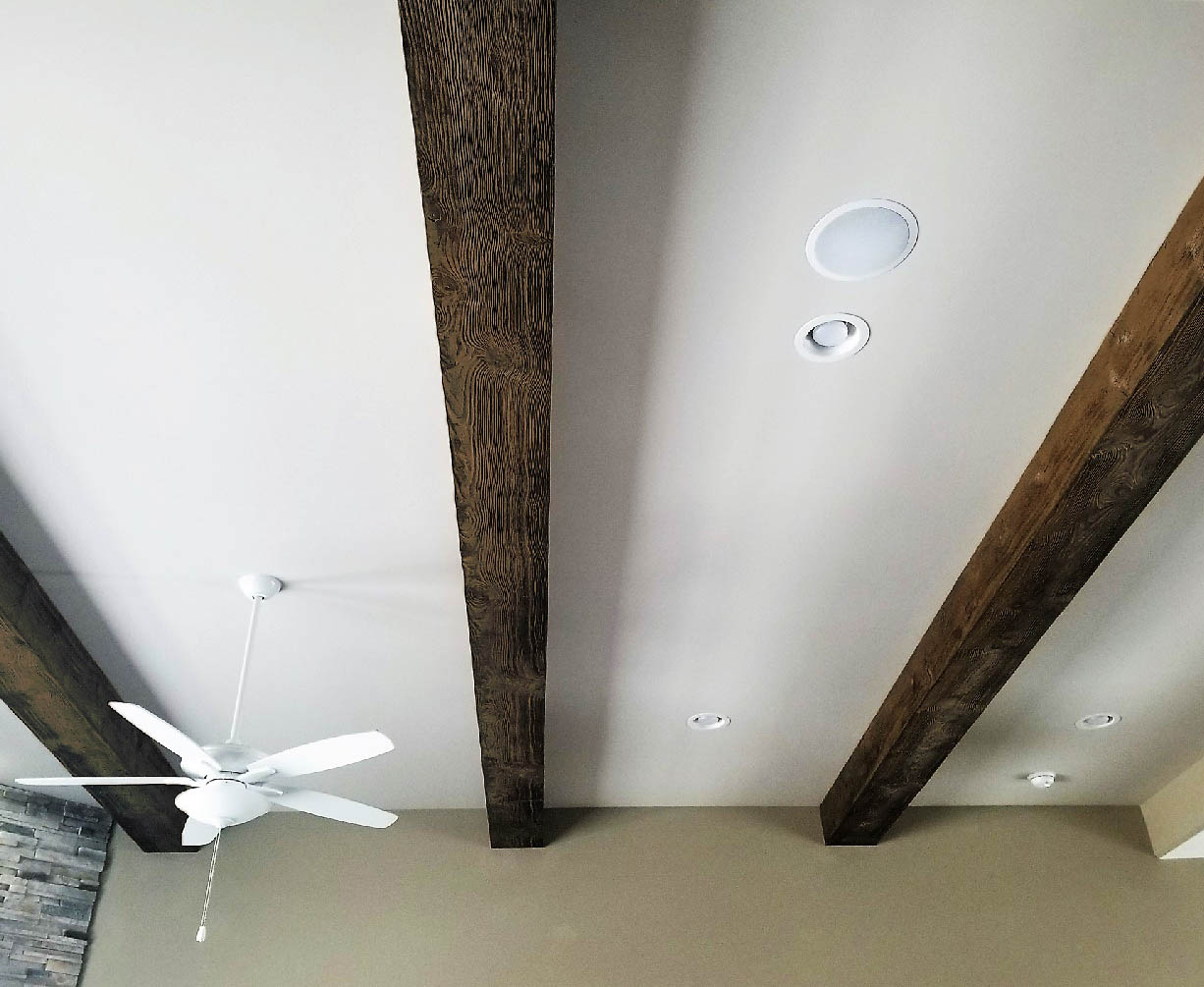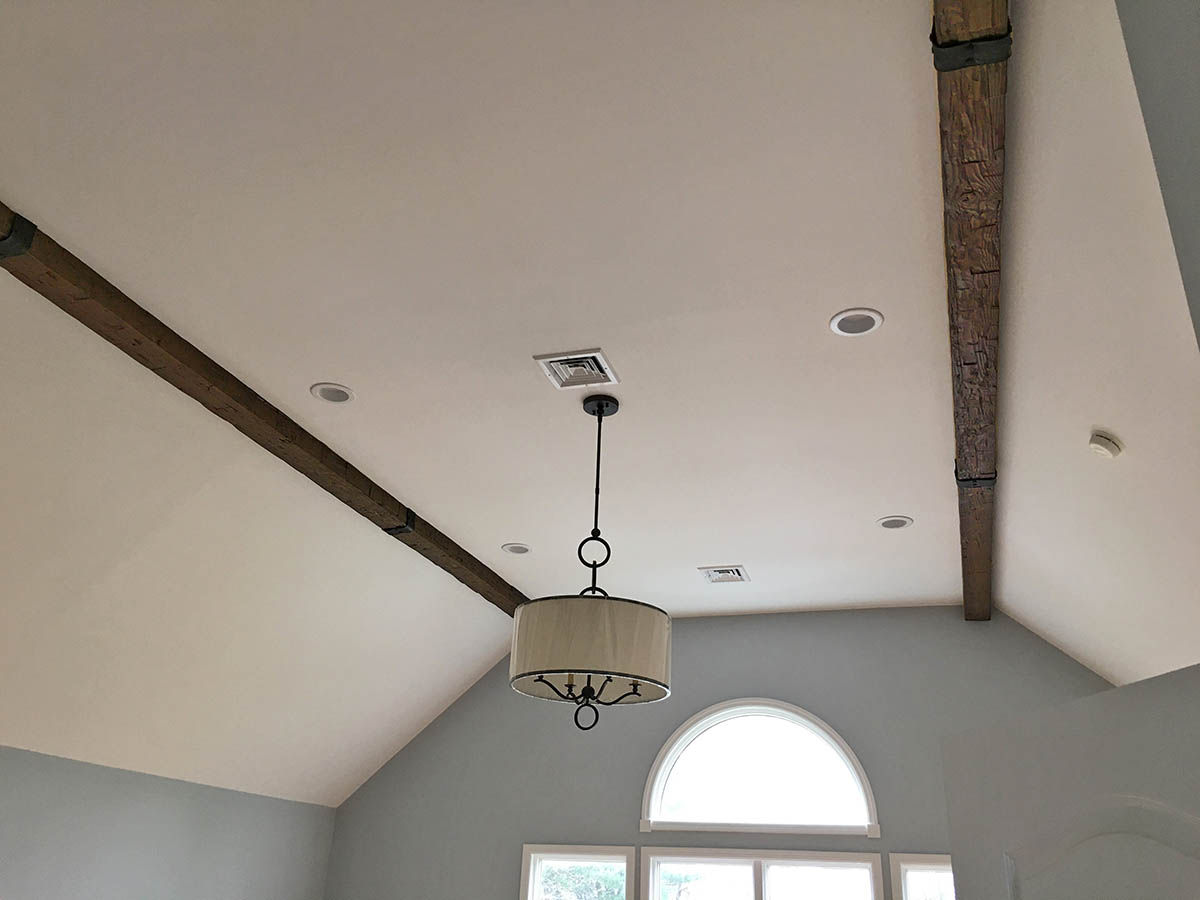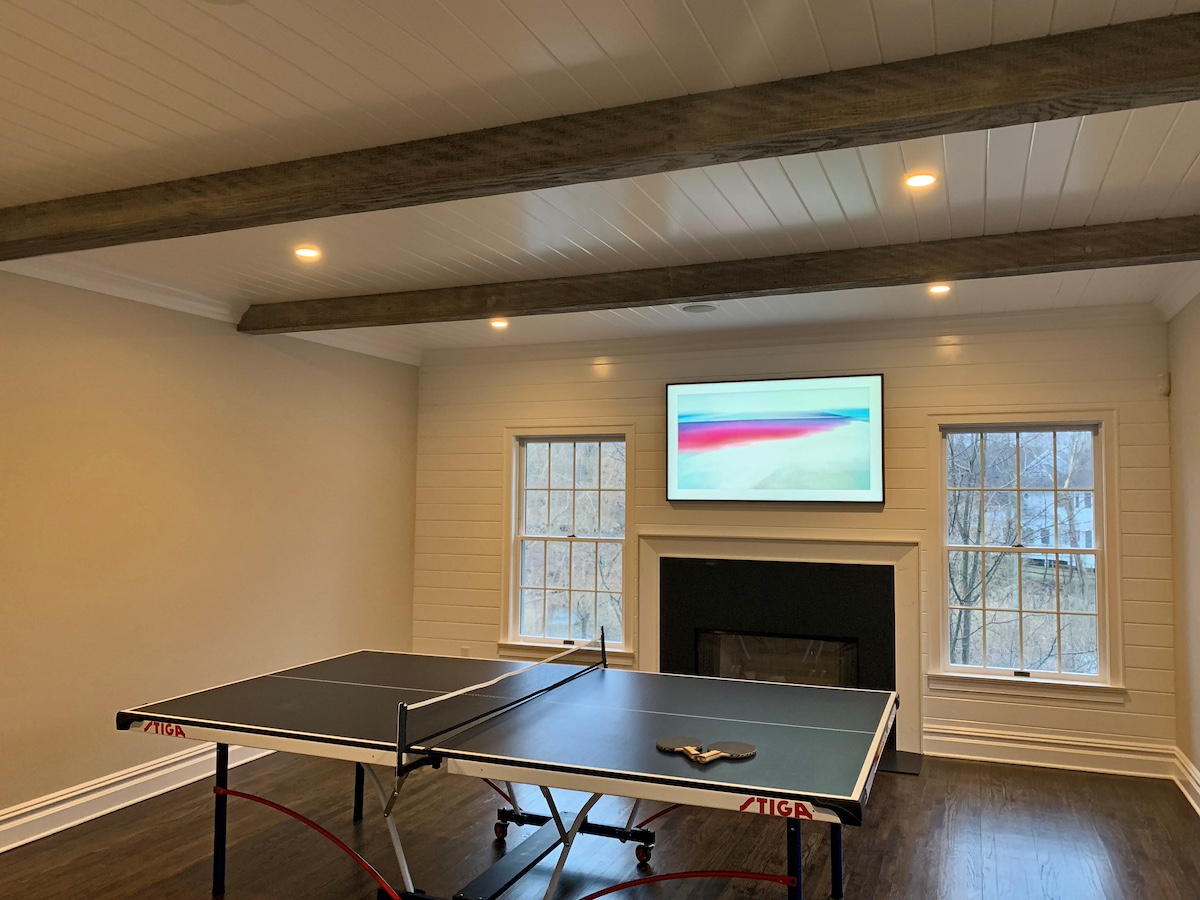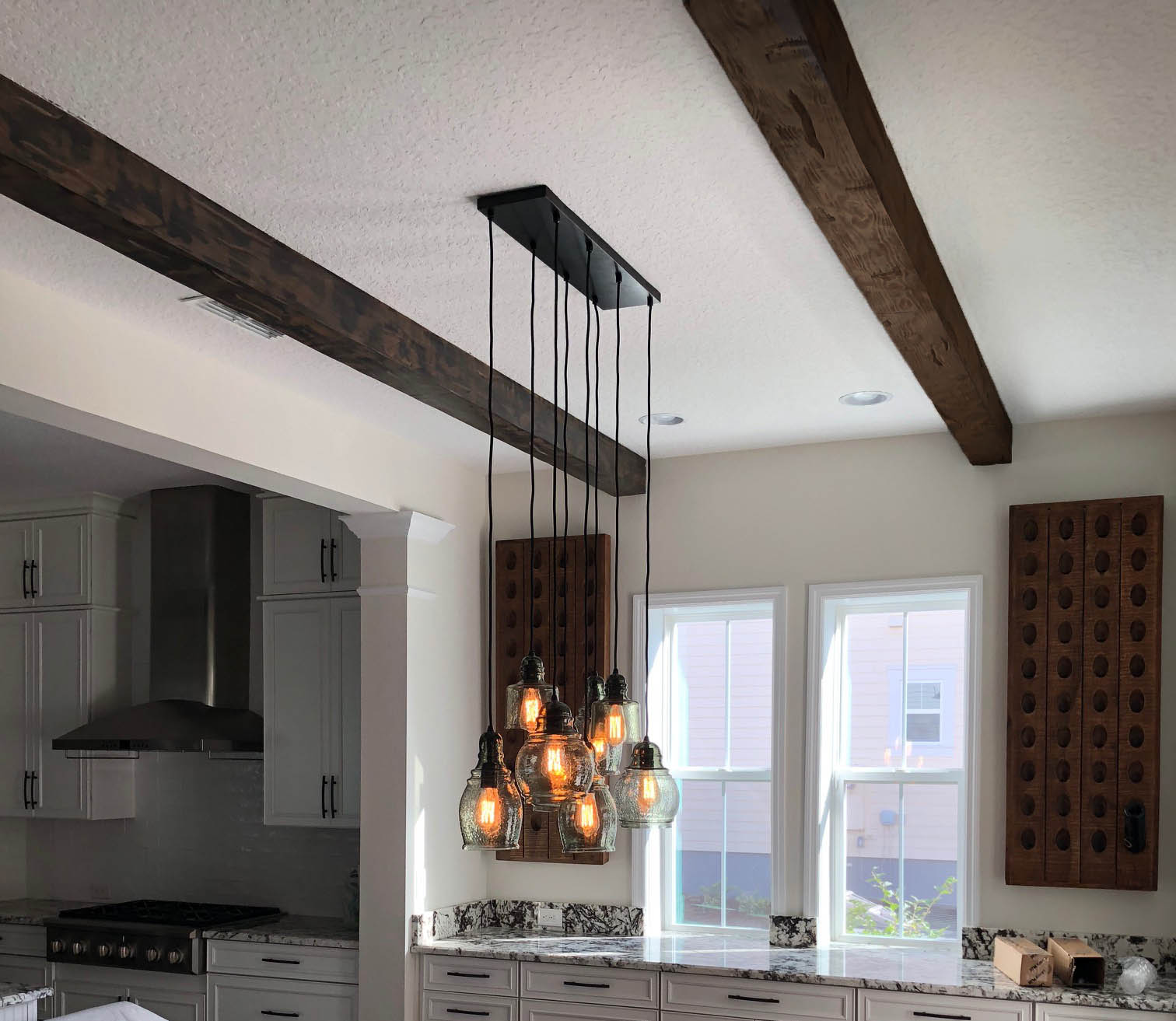
Flipping houses is the art of buying a property, investing money in fixing it up, and then selling it for a profit. It’s the staple of countless HGTV shows—but it’s also a risky business.
When flippers purchase a property, there’s no guarantee they’ll make their money back. Slim profit margins mean that problems like ceiling cracks can spell disaster for your investment. Fortunately, when ceiling cracks are merely cosmetic, the right DIY solution can keep house-flipping profits whole.
First-time flipper Tim Meadows from Green Bay, Wisconsin was horrified when he walked into the new investment property he and his wife had just purchased and found a huge crack in the ceiling. Learn how they used faux wood beams as a quick and easy cosmetic fix for the crack in their investment property.
Uncovering the Source of Ceiling Cracks
When a crack in a ceiling or wall appears out of nowhere, figuring out where it came from is step one.
"What was really upsetting was that it simply wasn’t there when we bought the property," Tim said. "They'd freshly plastered the ceiling, and it looks smooth and pristine."
However, a quick examination by their contractor revealed the source of the problem.
Covering the crack with one of our Faux Beams helped hide the crack, and blend the ceiling seamlessly together.
"Because it was a fairly new house, right next to another new development, the entire property was shifting,” Tim explained. “Structurally it was sound, but it would take months or even a couple of years for everything to settle into place. The contractor told us that even if we replaced the drywall, there was no guarantee that the crack wouldn’t reappear weeks or months later."
While it was a relief for Tim to learn that there were no structural issues at play, he was still left with a serious issue on his hands. A crack was certainly a bad look for a new home
He had to find a way to cover the crack without busting his budget, but his initial options weren’t great. Redoing the entire ceiling would be expensive and time-consuming. Plastering over the crack would be a band-aid solution at best, and it would still be visible to potential purchasers.
"We really didn't know what to do," Tim explained. "Whatever solution we came up with was uncertain and expensive."
Using Faux Beams For Cosmetic Workarounds
Things seemed pretty hopeless for Tim and his wife—until she saw a Barron Designs blog post about how a Pennsylvania couple had used one of our faux wood beams to cover a reoccurring crack in their ceiling.
"We realized then that a single beam across that part of the ceiling would look pretty cool and also cover the crack entirely."
Better than that, if the crack widened or expanded, the width of the beam would still cover it up, giving the appearance of a single, seamless drywall ceiling.
"So for less than the cost of dry walling and plastering the entire ceiling, we purchased one of your ceiling beams and installed it with mounting blocks and screws. The whole process took less than two hours, and the results were amazing."
In less than a day, Tim and his wife covered the crack in the ceiling. Potential purchasers looking at the home would have no idea that the beam hadn't been there all along.
When to Look Beyond Cosmetic Ceiling Crack Cover-Ups
For safety and liability, it’s critically important to bring in a structural engineer to determine whether a ceiling crack is cosmetic or a sign of a deeper and dangerous structural issue.
If the engineer determines that the ceiling crack is cosmetic, you are free to proceed with a simple ceiling beam cover-up.
Get The Look with Faux Wood Beams
Other Examples of Our Attractive and Hyper-Realistic Faux Wood Ceiling Beams
Hand Hewn Faux Wood Beams in Caramel
Hand Hewn Faux Wood Beams in Cinnamon
Resolve Your Cosmetic Ceiling Crack Crisis With Barron Designs
Without an affordable DIY solution, Tim’s ceiling crack repair could have sunk his first flipping project. Whether you need to make a similar cosmetic correction or simply want to add dimension and charm to the ceiling of your home, Barron Designs has the products you need.
Are you excited about cosmetically covering cracks in your home's ceiling using faux beams? Take a look at our collection of faux ceiling beams for a stylish fix.
Shop Related Products






